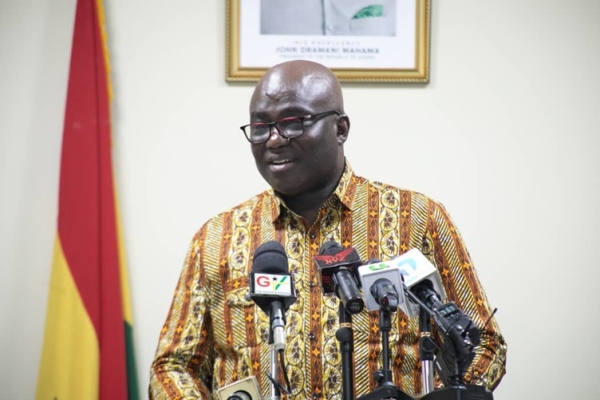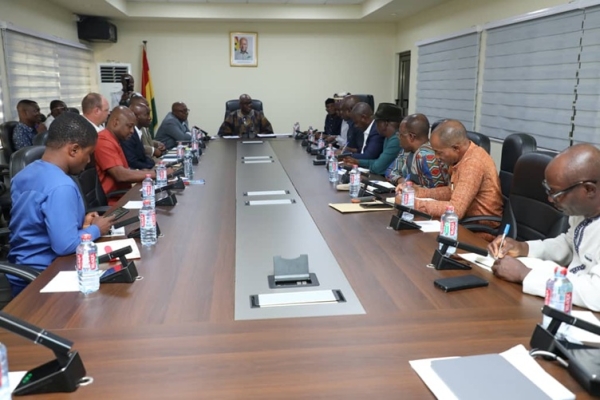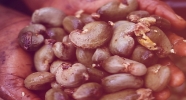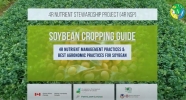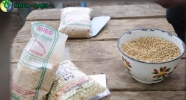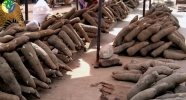The Bekwai Municipal Assembly is one of the 27 districts in the Ashanti Region established under Legislative Instrument (L.I. 1906, 2007). Until recently the Bekwai Municipality was part of the Amansie East District made up of the Bekwai and Bosome-Freho Constituencies.
With the creation of new districts in 2008, the Bosome-Freho constituency has been curved out of the district known as the Bosome-Freho District with its capital at Asiwa and the upgrading of the Bekwai Constituency to a Municipal status named as Bekwai Municipal Assembly with its capital at Bekwai.
Politically and administratively, the municipality covered the entire Bekwai constituency. Some of the major settlements are Bekwai, Kokofu, Essumeja, Anwiankwanta, Dominase, Poano, Ofoase-Kokoben, Bogyawe, Senfi, Huntado, Abodom, Amoaful, Dadease, Kensere, Akyeremade, Dotom and Kokotro.
Municipal Governance
- The Bekwai Municipality has 27 electoral areas and 11 government appointees. The electoral areas include: Essumeja, Dominase, Bogyawe, Sanfo –Aduam, Ankaase, Poano, Ntinanko, Huntado, Ofoase-Kokoben, Senfi, Anwiankwanta, Kokofu, Akyeremade, Kensere, Pampaso, Dwumakro, Asanso/Feyiase, Amoaful, Adankranja, New/Zongo, Asokwa/Tunsuom, Brofoyedu, Nampansa, Abodom, Dadease, Dotom, Kokotro.
The Bekwai Municipal Assembly has one Urban Council and 7 Area councils as indicated below:
| NO. | AREA COUNCIL | CAPITAL |
| 1 | Bekwai Urban Council | Bekwai |
| 2 | Essumeja Area council | Essumeja |
| 3 | Dadease Area Council | Dadease |
| 4 | Asuo-Dankran Area Council | Bogyawe |
| 5 | Adagya Area Council | Huntado |
| 6 | Adumasa Area Council | Ofoase – Kokoben |
| 7 | Kokofu Area Council | Kokofu |
| 8 | Adudwan Area Council | Kensere |
There are seven paramountcies namely Bekwai, Essumeja, Kokofu, Denyase, Amoaful, Adankranja and Asamang stools.
PHYSICAL AND NATURAL ENVIRONMENT.
It is located in the southern part of Ashanti Region. It shares boundaries with Bosomtwe District in the north, Adansi –North in the south, Bosome-Freho District to the East and Amansie-Central and Amansie –west to the west. The Municipal Assembly lies within latitude 6° 00’N 6° 30’N and Longitudes 1°00 W and 1° 35W. It covers a total land area of about 633sqkm.
Topography and Drainage
The Municipality lies within the forest dissected plateau physiographic region with an average height registering between 150 metres and 300 metres above sea level. The topography is relatively flat with occasional undulating uplands, which rise around 240 metres to 300 metres.
The area is drained by the Oda River and its tributaries including Dankran and which portrays a dendritic pattern. The construction of small irrigations dam on the Oda Rivers offers great potentials for Agricultural Development all year round.
Climate
The climate of the district is the semi-equatorial type. It is characterized by double maxima rainfall. The first major rainfall season starts from March and ends in July. The second rainfall starts from September and ends in November. The mean annual rainfall is between 1600m – 1800mm. It has a fairly high and uniform temperature ranging between 32°C in March and 20° C in August. Relative humidity is fairly moderate but high during the rainy season. It ranges between 70 and 80 percent in the dry season. The temperature regime and rainfall pattern enhance the cultivation of many food crops throughout the District.
Vegetation
The Bekwai-Municipal Assembly lies within the moist – semi- deciduous forest zone. Some of the tree species are Odum, Wawa, Edinam and Mahogany. Parts of the forest have been reserved. The ecological unfriendly farming practices and human activities, particularly farming and timber extraction have reduced the primary forests to secondary forests. Chronolaena Ordorata, popularly called Acheampong shrub seems to be the predominant vegetative cover in many parts of the District.
Geology and Minerals
The Municipal is underlain by three geological formations. These are the Birimian, Tarkwain and granitic rocks, which are rich in mineral deposits. The Birimian and the granitic rocks have been identified to have great potentials since they contain such minerals as gold.
The minerals found in the Municipal include:
- Gold at Kokotro, Koniyaw and Boni.
- Clay deposits at Boagyaa-Besease.
- Sand and Gravel deposits at Patasi, Sanfo-Aduam, Dominase and Esiase.
The untapped mineral deposit at koktro, Koniyaw and Boni need to be harnessed so as to create jobs and open up these areas for development. The Clay and sand deposits at Boagyaa – Besease, Patasi, Sanfo-Aduam, Dominase and Esiase have shown a great resource potential for the housing, brick and tile factory, pottery and other clay related activities.
The multiplier effect in terms of increased employment, revenue mobilization in the Municipal cannot be over-emphasized.
Soils and Agricultural Land Use
The soils in the Municipal offer ideal condition for the production of oil-palm, tubers, cereals and other food and cash crops. With the President’s Special Initiatives on Oil Palm Plantation and Cassava for Industrial starch, the district has the soil potential to meet part of the nation’s demand for oil palm and cassava production
The District has seven (7) soil types, these are:
- The Bekwai –Oda Compound Association:
These soils are developed over lower Birimian rocks, which are moderately drained and are good for the cultivation of both tree crops such as Cocoa, Coffee, Oil Palm and Pear as well as food crops such as Maize, Cassava, Cocoyam, Plantain and Banana. The soils are found around Patasi, Anwiankwanta, Bekwai, Asokore, Koniyaw.
- Asikuma-Atewu-Ansum/ Oda compound Association:
These soils are developed over upper Birrimian rocks. They are well drained and suited for tree crops such as cocoa, coffee, palm oil, pear and forestry. These are found around Ntinanko, Dominase and Poano
- Mim – Oda Compound Association
These soils are developed over lower Birrimian rocks, which are well drained and are suitable for tree crops such as coffee, oil palm and pear. The valley bottom soils are also suitable for vegetables and sugar cane cultivation. They are found in the southern part of the District around Besease and Poano.
- Kobeda –Amuni – Bekwai Simple Association
These soils are developed over upper Birrimian rocks, which are moderately deep and well drained. They are suitable for forest reservation and rock quarrying and small farming in pockets of the deeper soils. They are found around Boagyaa and Esiase,
- Kumasi – Asuansi / Nta Offin Compound Association
These soils are developed over Cape Coast Granite rocks, which are well drained. They are suitable for the cultivation of tree crops such as cocoa, coffee, citrus, oil palm and pear as well as food crops such as maize, cassava, plantain and cocoyam. The lowland valley bottom soils are suitable for rice, sugar cane and vegetables. They are found around Kokofu, Essumeja, Edubrim, Abodom, Bogyawe and Gyasikrom.
- Juaso – Manso /Asuboa Pomasua Compound Association
These soils are developed over Tarkwaian rocks, which are moderately drained and are good for the cultivation of tree crops such as coffee, cocoa, citrus, oil palm as well as food crops such as Maize, Plantain, Cocoyam, Banana and Pineapples. The lowland and valley bottom soils are suitable for Rice Sugar Cane and Vegetables. They are found around Anwiankwanta, Kensere and Awiam
Implications of the Physical Features for Municipal Development
The physical characteristics of the Municipal such as the location and size,
relief climate, soil, vegetation and water resources offer tremendous
potentials for the development of the Municipality. Its positive impact could
be summarized as follows;
Water for irrigation at areas such as Poano, Anwiankwanta, Boni-Behenase
an Ntinanko where River Oda passes.
Exploitation of the mineral and clay deposit will generate employment to the
Unemployed youth and also improve the Assembly’s Revenue Mobilization
effort.
The natural environment such as the Essumeja Forest Reserve and the
Mprampram forest reserves provide rich tourist attractions which need to be
harnessed to its fullest potential for local economic development.
In spite of these potentials, the destructive activities by man through illegal
felling of trees in the forest, pollution of the rivers through fishing is affecting
the ecology.
INVESTMENT POTENTIALS
AGRICULTURE
The Municipality is endowed with the following agricultural potentials:
* Rich soils and favourable climate conducive for tree crop plantation and food crop production.
* Availability of land for river valley rice production
* Establishment of citrus, Oil palm and cocoa seedling nursery and plantations.
TOURISM POTENTIALS
Tourist Attraction
The subin shelter belt forest reserve, Oda river forest reserve and prampram forest reserves.
* Kokofu- Anyinam, the birth place of King Osei Tutu 1
* River Banko a classic example of an annular drainage pattern (the only one in the country)
* Essumeja – Asantewmanso, a sacred hole in the forest from which Asantes are traditionally believed to have come from
* The subin shelter belt, Oda River and Prampram forest reserves
Manufacturing /Industrial
* Processing of Agric Products e.g. Oil palm Products, fruit Juice, cassava Starch, Powder Chips etc.
* Manufacturing of Ceramic Products, Bricks, Roofing Tiles, Pottery Products etc.
Mining
* Development gold Mine in areas around Koniyaw and Kokotro where feasibility studies have confirmed availability of gold deposit in commercial quantities.
AGRICULTURE.
The municipality is endowed with the following agricultural potentials:
Rich soils and favourable climate conducive for tree crop plantation and food crop production.
Availability of land for river valley rice production
Establishment of citrus, Oil palm and cocoa seedling nursery and plantations.
MAJOR CROPS
Major crop grown in the municipality are maize, cassava, pepper, garden egg, cocoa, citrus, oil palm and cocoyam
Cocoa production is done on commercial scale. Average area cultivated is estimated around ten (10) acres. Before the creation of the Bosome Freho district, the municipality accounted for 45% of the cocoa product in the district.
Citrus and oil palm production are extensively cultivated in almost every area of the municipality.
OPERATIONAL AREAS
The Bekwai municipal is sub-divided into (10) ten operational areas manned by 10 Agricultural Extension Agent.
The extension – farmer ratio is estimated at one AEA to two thousand five farmers (1:2,500).
LIVESTOCK/POULTRY PRODUCTION
The municipality is not well endowed with respect to livestock production. Cattle and pig population is estimated around 1000 and 1800 respectively. Sheep and goat population is estimated around 8500.
Poultry production is a growing enterprise in the municipal. Current poultry production is estimated around 32,000 in the Bekwai municipality. Area of major cattle and poultry production are Bekwai, Kokofu, Behenase, Adjamesu.
PROCESSING ACTIVITIES
Bekwai municipal is prominent for its oil palm industry. Oil palm production is very important among most farmers. Average acreage put under cultivation is estimated around (5) acres. Production is done virtually in every part of the municipality, with Ntinako being the area of major concentration. This gives credence to the well-known oil mill processing activities at Ntinako. Apart from Ntinako oil mills, there are several of their processing facilities located in certain parts of the municipality.
GARI PROCESSING
Cassava is one prominent crop grown in almost every part of the municipality. Current yield per hectare is estimated around 4000 tones.
Some gari processing communities are Kokofu, Ntinako, Amoafo, however, Bogyawe is well noted for its gari processing activities in the municipality.
ROAD NETWORK
Road net work linking Bekwai Municipal to the other communities is predominantly laterite and lying on such road become difficult especially in the rainy season. Accessibility to most of the farming communities is usually very difficult due to the bad nature of the road.
NGO ACTIVITIES
Currently, Sustainable Tree Crops Project /IITA is operating in the municipality.
STCP/IITA
The program aims at improving cocoa production in the municipality through regular training of community frontline farmers (Farmers’ Field School) who intend pass on the knowledge acquired to their colleague farmers.
FBO ACTIVITY
There are (10) ten farmer-based organization operation in the Bekwai municipality. They are involved in production, processing activities
PRIMARY PRODUCTION
- Agriculture 51%
- Industry (%) 15%
- Services (%) 34%
ECONOMIC ACTIVITIES
Agriculture
v Food Crops – Major food crop items in the Municipality include Maize, Cassava, Plantain and Cocoyam
Cash crops – The Municipality is noted for cocoa Production, and oil palm cultivation.
Non Traditional cash crops that gained popularity in the Municipality include citrus, Rice, Pineapple and Cabbage.
Aquaculture: Fish farming has been introduced in the District at Anwiantwanta, and on a smaller scale at Ofease-Kokoben and Chiransa.
Forest Resource
The municipality has forest reserves at Essumeja Forest Reserve
Industries
District’s Industrial sector dominated by small scale Private Investment in the area of
- Agro Processing
- Metal and wood based work
- Textiles and garments
- Leather works and food processing.
Minerals
- Gold deposit
- Sand and gravel wining
- Clay deposit
TELECOMMUNICATION
- Fixed line systems
- Mobile network
ELECTRICITY
95% coverage
WATER AND SANITATION
Water Coverage 80%
Sanitation coverage 54%



